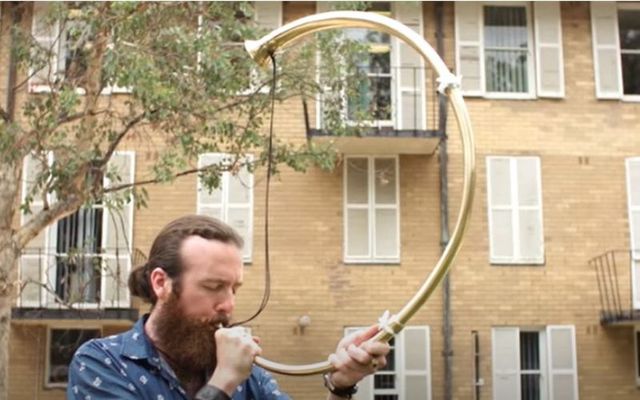A study comparing modern horns played in India to ancient Irish instruments dating back to the Bronze and Iron Ages suggests a sustained cultural exchange between the two regions.
The study, which was published in the Journal of Indian Ocean Archaeology in 2016, may help foster a greater understanding of the origins of some Indian instruments and provide clues to the sound of ancient Irish music.
"Some horns are frankly shockingly similar, to the point where it is like witnessing time travel," study author Billy Ó Foghlú told Live Science. "If I were to find one of these modern Indian instruments in an Irish archaeological excavation and I didn't know what I was looking at, I would likely assume it was a Late Bronze Age Irish artifact."
Ó Foghlú, an archaeologist and Ph.D. student at the Australian National University in Canberra, compared the kompu, a large, C-shaped horn cast in bronze with a high tin count, from Kerala, India, to the Late Bronze Age horns from Ireland and Scandinavia. The instruments are similar in materials, form and most likely production process as well.
"Archaeology is usually silent. I was astonished to find what I thought to be dead soundscapes alive and living in Kerala today," Ó Foghlú said.
"The musical traditions of south India, with horns such as the kompu, are a great insight into musical cultures in Europe's prehistory.
"And, because Indian instruments are usually recycled and not laid down as offerings, the artifacts in Europe are also an important insight into the soundscapes of India's past."
Ó Foghlú said he decided to investigate the connection after seeing a carving of two musicians playing a carnyx — a bronze Irish horn in the form of an animal head —on the exterior of the Great Stupa, a 2,000-year-old Buddhist monument at Sanchi in central India.
He said the similarities between the instruments are not just physical.
Modern Keralan kompu horns are part of an ensemble and played percussively and rhythmically, more like a drum. He said that the tuning of these instruments may indicate how ancient European horns were played.
"It is the musicological similarities of these instruments that are really wonderful," Ó Foghlú said.
"Some almost identical instruments have been unearthed together, but they are slightly out of tune with each other to western ears," Mr Ó Foghlú told the Australian National University.
"This was previously assumed to be evidence of shoddy workmanship. But in Indian music this kind of dissonance is deliberate and beautiful.
"Horns are used more as a rhythm instrument, not for melody or harmony in a western sense."
* Originally published in 2016. Updated 2023.




Comments